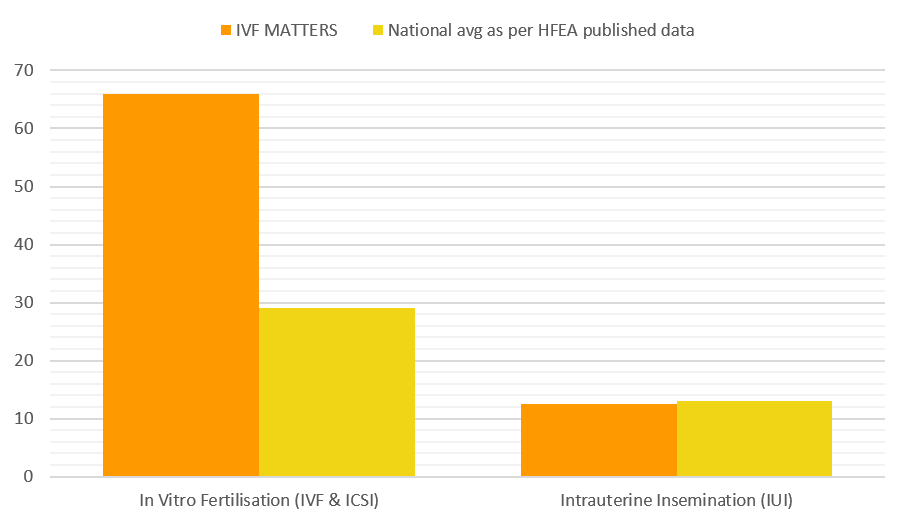Female Subfertility Treatment in London
we've featured in





How does PCOS cause a delay in conception?
The hormonal disturbances caused by PCOS are the primary drivers of subfertility in affected women, disrupting ovulation, menstrual cycles, and uterine receptivity, making it one of the most common causes of infertility in women.

Can fibroids cause female subfertility?
While not all fibroids cause infertility, certain types like submucosal fibroids can significantly impair a woman's ability to conceive and carry a pregnancy to term. Proper evaluation and management of fibroids is important.

When does endometriosis affect fertility?
Endometriosis is a significant risk factor for female subfertility, with the degree of impact depending on the stage and location of the disease. It is important to assess and treat women with endometriosis who are trying to conceive.

Meet Dr Koita
Experience personalised fertility solutions under my expert guidance.
I am a fellow of the prestigious Royal College of Obstetricians and Gynaecologists (FRCOG) and trained in Assisted Conception at Kings College Hospital, London. I've also done a Masters in Healthcare Leadership, from Cornell University, USA.
My commitment extends to making comprehensive diagnostic services readily available and financially feasible across the UK. I aim to empower you through IVF Matters, ensuring you have access to a wide range of high quality services.

Celebrating our high success rates
Let's Make Parenthood a Reality Together
We are dedicated to helping you overcome challenges preventing you from getting pregnant naturally or using assisted reproductive technology like IUI. This graph displays our live birth rate for 2021 for all ages.
A NEW WAY TO PAY FOR FERTILITY TESTS AND TREATMENTS
Buy Now Pay Later
Payments in instalments. Soft credit checks! Quick applications! Select at checkout.
Fertility care in the comfort of your home or in-person at London
Common causes of female subfertility
SUBFERTILITY DUE TO TUBAL BLOCK
ROLE OF FEMALE AGE ON FERTILITY
OVARIAN RESERVE TEST

Why choose IVF Matters?
We strive to provide our patients with exceptional support and understanding while they are going through their fertility evaluation and treatment.
Our IVF clinic offers leading-edge technology and treatment options at affordable costs. We are the UK's first clinic to offer Buy Now Pay Later payment plans for diagnostic fertility tests and treatments.
FAQ
If you've sadly had a miscarriage you will want to know how to avoid it in future. Additional tests will be recommended for both you and your partner to understand the underlying reason.
These include chromosome analysis, thyroid function tests, blood sugar checks, assessment of the uterine cavity (3D saline scan or hysteroscopy), and immune tests (where appropriate) for the female partner. Whereas the men would undergo a chromosome analysis and sperm DNA fragmentation tests.
Women who have supportive care from the beginning of a pregnancy have a better chance of a successful birth.
Treatment depends on the problem identified and may include blood thinners, immune modulators, medication to control thyroid and blood sugar levels. Uterine anomalies such as a submucous fibroid will require surgery.
Men with high DNA fragmentation should consider lifestyle changes along with Intracytoplasmic Sperm Injection (ICSI) treatment (where appropriate).
Preimplantation Genetic Testing - Aneuploidy (PGT - A) will allow embryo selection based on chromosomal content and is likely to result in a positive outcome.
If a chromosomal problem is identified in either of you, then embryo selection with Preimplantation Genetic Testing for Monogenic Disorders (PGT - M) is the treatment of choice.
The common causes include
- Polycystic Ovarian Syndrome (PCOS)
- Endometriosis
- Blocked fallopian tubes
- Fibroids and Polyps
- Age - Female fertility declines after the age of 35
- Medical conditions eg thyroid dysfunction
- Lifestyle factors eg being overweight or underweight, and smoking

Take the next step to grow your family
If you’re concerned about your fertility, get in touch with us today — we’ll be able to advise you on a full range of options based on your individual fertility needs.
We offer free 10-minute advisory calls to anyone looking to learn more about our approach and our treatments.
Start your exciting journey!
Contact Us
Our Location
Our Payment Plans

Monthly payments over 12 months

Monthly credit card payments over 6 months

Monthly payments up to 7 years
Working With








